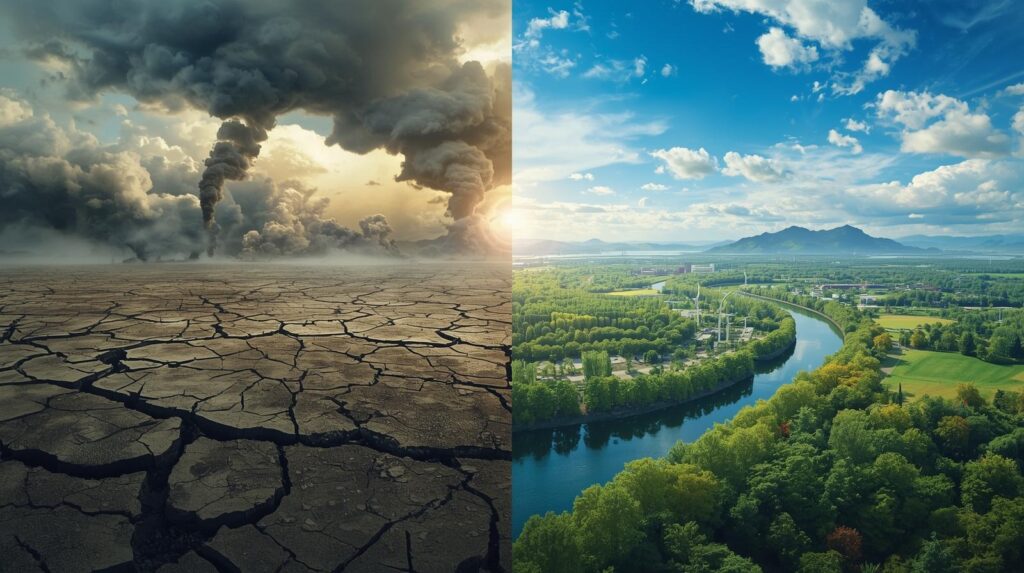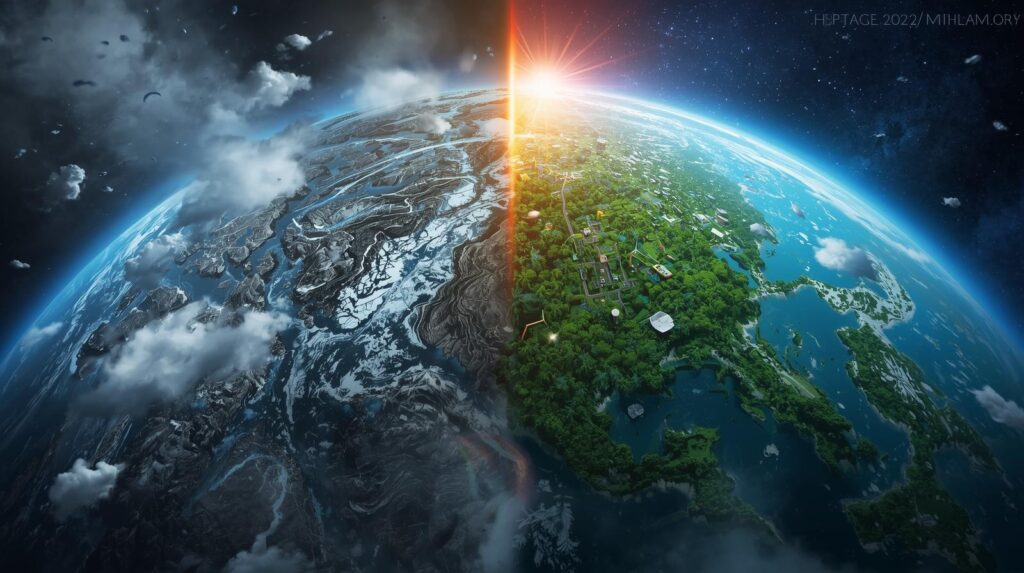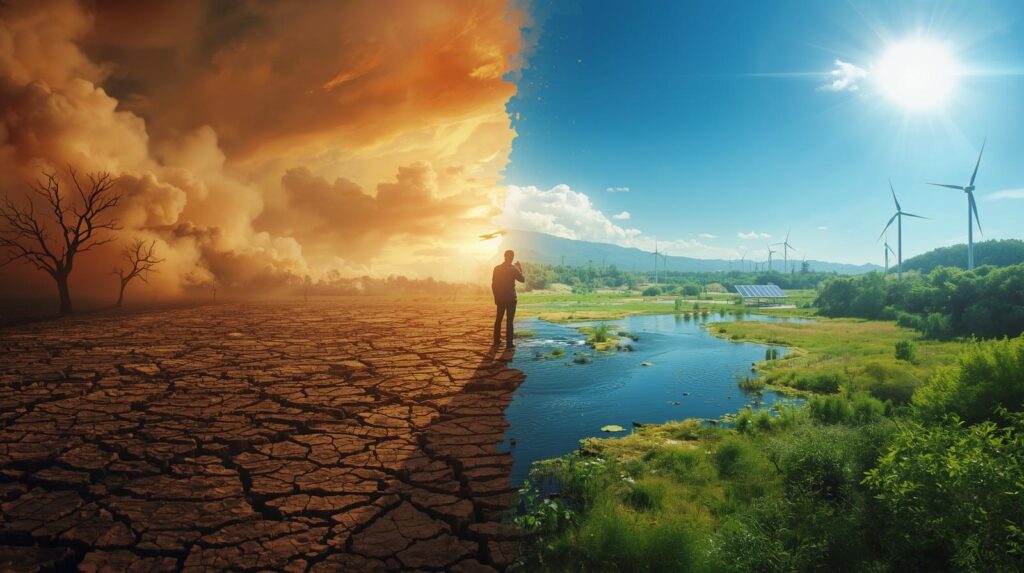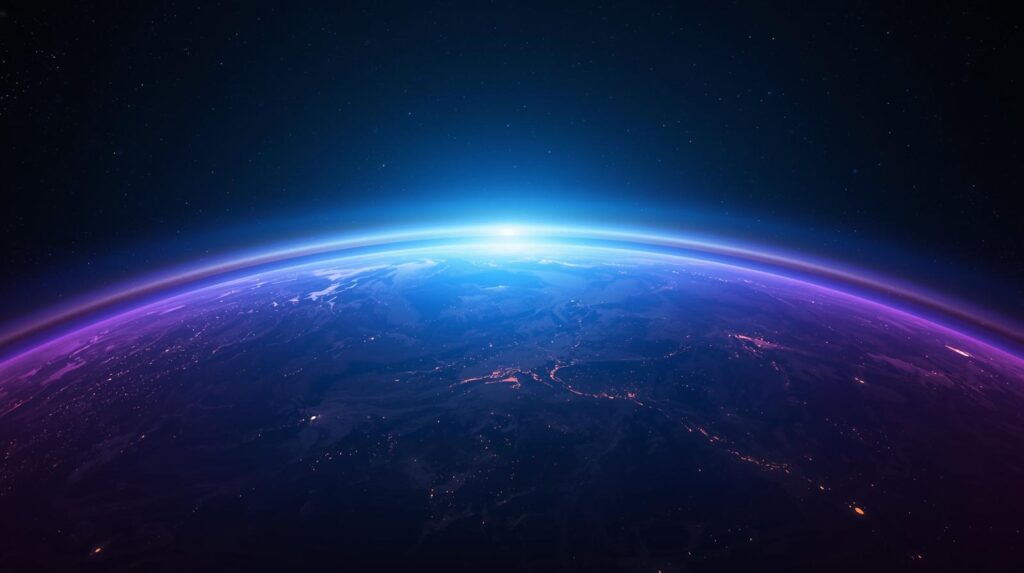Climate Realities & the Future of Our Planet
A Changing Planet
Step outside on a hot summer day, and you can feel it—a degree or two hotter than your grandparents’ summers. That’s climate change, not a catchphrase but an actual change in the way the planet works. It’s the planet warming up due to human activities primarily, such as the use of fossil fuels and the felling of trees. The consequence? Rising temperatures, more extreme weather, and a questionable but not irretrievably doomed future.
Climate change is only one aspect of earth science. Mystery in space is also crucial -see Mystery of black hole where scientists have examined the darkest mystery of universe.
How We Got Here
Climate change is not a new phenomenon; Earth climate has been changing for millions of years—it has gone through ice ages, warm periods, call them what you will. But what is occurring today is different. Since the Industrial Revolution, we’ve been pumping greenhouse gases—carbon dioxide (CO2), methane, nitrous oxide—into the atmosphere. These gases act like a blanket, trapping heat that would otherwise escape to space. Burning coal, oil, and gas for energy, plus deforestation and agriculture, has spiked CO2 levels to 420 parts per million, higher than any time in at least 800,000 years. It’s like turning up the thermostat and leaving it on.

The Science of a Warming World
The Greenhouse Effect Described
Consider the greenhouse effect as a warm sweater for the planet. The sun radiates onto the planet, a little bit of heat reflects back, but greenhouse gases envelop enough to keep the planet cozy. Without it, the Earth would be a chilly rock. The catch? More gases are enveloping the Earth with more heat than it would have otherwise. More CO2 from vehicles, industry, and fossil-fuel power plants adds to the blanket, warming the world—by roughly 1.1°C above pre-industrial levels. That may not sound like much, but it does make a difference.
Feedback Loops: The Domino Effect
It’s not just about warming; it’s about systems communicating with one another. Polar ice melt is a prominent example. Ice is bright and reflective; when ice disappears, darker oceans absorb more solar radiation, speeding warming. It’s a snowball rolling down a hill. Melting permafrost frees methane, a 25-times more potent gas than CO2. Cutting trees that remove CO2 makes it worse. The feedback loops create a compounding problem, like when a microphone is placed too close to a speaker.
What’s Changing Now
Wilder Weather Patterns
Ever noticed storms getting stronger? That’s climate change in action. Warming oceans power intensifying hurricanes, such as Hurricane Katrina in 2005 or Typhoon Haiyan in 2013 that leveled villages. Heatwaves are the new norm—summer 2022 in Europe saw temperatures reaching 40°C in regions that barely reach 30°C. Drought parches fertile land, such as California’s Central Valley, while cities become overwhelmed after a rainstorm, as in Pakistan’s 2022 flood. It’s not bad weather; it’s a new reality in which extremes are happening more frequently.

Rising Oceans and Melting Ice
Sea levels are rising, approximately 3.7 millimeters per year, as ice caps and glaciers melt and oceans expand due to warming up. Miami and the Maldives experience frequent flooding. The ice sheet of Greenland is losing 270 billion tons per year, sufficient to fill millions of Olympic-size swimming pools. If it completely melts—apocalypse stuff—seas could increase by 7 meters, submerging coastal cities. Even a rise of 2100 meters, scientists warn, would displace millions.
Impacts on Land and Life
Ecosystems Under Stress
The natural world heats up, too. Coral reefs, such as Australia’s Great Barrier Reef, are bleaching as warmer water stresses the tiny algae that corals eat. Fifty percent of the world’s reefs may be gone by 2050. On land, creatures are in motion—sea ice melts, and polar bears starve, and forests burn more often, such as California’s 2020 fires that burned 4 million acres. Species are vying for survival as the globe transforms. Time is of the essence for most species, and not everybody gets a seat.
Human Costs: From Farms to Cities
For human beings, climate change strikes housing, water, and food. Crop yields are being cut by droughts—Indian wheat shortages or American Midwestern corn issues. Sea level rise imperils coastal dwellers; Bangladesh may lose 17% of its land by 2050 and relocate millions. Heatwaves render cities uninhabitable unless with air conditioning, which is beyond everyone’s means. And let’s not forget drugs—disease-carrying mosquitoes such as dengue are on the move due to warmer temperatures.

Earth’s Future: Scenarios and Solutions
The Path Ahead
How will the future of the Earth turn out? That is in our hands. If we continue to burn fossil fuels, unabated, projections indicate 4°C by 2100. That is a planet of broken systems, huge migrations, and uninhabitable zones. A middle course—reducing emissions to cap warming at 2°C, as Paris vowed—equals crisis, not catastrophe. The best-case scenario? Net-zero 2050, with warming no greater than 1.5°C. It is like deciding whether to travel on a bad road, a bumpy cut-through, or a better road—we decide. Cutting Emissions: The Big Fix
The largest lever is curbing greenhouse gases. Go solar, wind, hydropower—is the most critical. Solar panels have begun powering homes from California to Kenya. Electric cars are replacing gasoline guzzlers; Norway’s already half there. Reafforestation does the trick too—trees are the vacuum cleaners of nature, sucking up CO2. Nations like Costa Rica demonstrate it can be achieved, at 99% renewable energy and ambitious forest revival. It’s not technology all the way—less meat consumption means less methane, and better city planning means less driving.
Adjusting to a New Reality
Building Resilience
Even if we reduce emissions today, a certain amount of climate change is irreversibly underway. That’s why adaptation is necessary — it’s all about preparing for what’s ahead. Rotterdam is constructing sea walls and floating apartment blocks to adapt to rising sea levels. Across Africa, farmers are planting more resistant crops like sorghum so their crops don’t die. In Bangladesh, improved weather warning systems already saved lives during cyclones.
Adaptation prevents climate change, but does not stop it, and enables us to manage the risks. We might not be able to prevent all the consequences, but we can better prepare.
Glaciers are melting at a higher rate as well due to these changes. For further information, see: The Big Melt: How Fast Melting Ice is Changing Our World.
Communities Leading the Way
People are not waiting for politicians. Local people in the Amazon are applying traditional knowledge to protect forests. Youth activists, inspired by Greta Thunberg, are demanding policy change. Small island nations like Fiji are growing mangroves to protect coastlines. It indicates that solutions begin with us, not business leaders or politicians.

The Role of Science and Technology
Watching Over the Changes
Scientists are our eyes on the ground. Satellites track melting ice, such as NASA’s GRACE mission following Greenland’s losses. Models for the future are made using climate models, which inform policy. New technology, such as carbon capture, takes CO2 out of the air—imagine a huge air purifier. Not a silver bullet, but one for the box. Breakthroughs such as lab-grown meat or hydrogen planes could slash emissions again.
The Power of Data
Knowledge is power. The IPCC reports, drawing on thousands of studies, detail the stakes. Other apps, such as MyClimate, enable you to monitor your carbon footprint—how many burgers or flights accumulate? Information enables us to make better choices, from voting for green policies to replacing old lightbulbs with LEDs.
Why It Matters to You
A Shared Future
Climate change is not a scientific issue; it’s personal. Your coffee, which was produced in Ethiopia, is at risk of drought. Your favorite beach may be destroyed. Your children might have an overheated summer. But you don’t have to give up hope. Every step—recycling, biking to work, investing in clean energy—counts. Little actions equal real change: enough ripples create a wave.
To Conclude
The future is not written. Take the ozone layer: international CFC bans in the 1980s saved it. It’s more difficult with climate change, but we have the tools available to us—science, technology, and human will. Cities such as Copenhagen are looking to be carbon neutral by 2025. People, communities, and countries are making the transition. The question is, are you on board? The next time you pass by a windmill or see a global warming protest, keep this in mind: this is the story of our world, and we’re all writing the next page.
